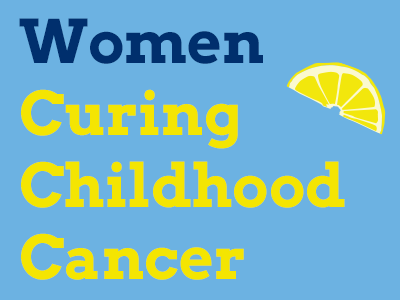
Dr. Catherine Flores, with childhood cancer hero Sawyer.
by Trish Adkins, ALSF
Ever since she was a child, Dr. Catherine Flores, of the University of Florida, loved the challenge of experimenting and investigating the origins of things. Now, as a pediatric cancer researcher, Dr. Flores is applying those interests to curing childhood brain cancer.
ALSF awarded Dr. Flores a Young Investigator grant in 2015, which she used to study the preclinical development of adoptive cell therapy to fight high-grade gliomas, a category of fast-growing pediatric brain tumors with particularly poor survival rates. Her project laid the groundwork to better understand how a child’s own immune system cells could be altered to fight brain tumor cells. This research may lead to better survival rates and minimize the use of treatments with high levels of toxicity.
Her work also led to a phase 1 clinical trial that studies the use of immunotherapy in kids with high-grade gliomas. The study is set to open in March 2018 and phase 1 will determine safety and dose. It is the first immunotherapy study of its kind for children, moving the oncology world one step closer to a breakthrough and a cure.
We spoke with Catherine Flores about her work and what it is like to be a woman researcher.
What made you want to get into science and research?
(CF): I have always been a curious person. I love exploration and experimentation. I love the discovery. I find "failed experiments" to be a challenge, not a discouragement. I never really realized that there aren't many women in science until my first faculty appointment and I am one of only two tenure-track female faculty members in my department.
What are obstacles that you have faced?
(CF): I have a two-year-old and balancing life is such a challenge. Being a researcher is not a 9-5 job, so rearranging the day and writing at night to get it all done was and is a huge obstacle. But I love it all. It is just challenging, that's all.
Sometimes, I feel a little judged when I come to work covered in banana, or can't do 6 pm meetings. BUT, I do a huge amount of work between my daughter's bedtime and sunrise.
If cancer was cured, what would you be doing?
(CF): When I was 10 years old, I wanted to be a marine biologist. I love the ocean and its animals. It is still fascinating. After I cure brain cancer, I still want to be a marine biologist.
Who are your role models?
(CF): Working moms with multiple children and Michelle Obama.
Do you have an impact story from your research—a story when you saw your work help children?
(CF): We have a clinical trial out of our program for children with recurrent medulloblastoma and PNETs. One of our patients, Sawyer, had always wanted to be a scientist. So I closed down the lab for the day and set it up to make it "Sawyer's lab". We had a personalized lab coat made for him with the University of Florida and his name all embroidered. We set up a kid-friendly experiment for him on each bench complete with exploding bottles, dry ice, glow in the dark chemistry, all the kid things! At each bench, I had a different grad student helping him - because grad students in lab coats are super cool to an 8-year-old boy. Then we all had pizza which is his favorite. His mom mentioned that Sawyer had said it was more fun than Disneyland.
Sadly, Sawyer passed away the following Christmas. Even though we couldn't ultimately help him fight against his disease, we at least let him be a scientist for a day. Sawyer was already unstable on his feet from his cancer, so his dad was there to keep him steady. That family made an impact on our grad students and researchers because we were all touched by him and inspired and motivated to do more. As lab researchers, we generally don't come in contact with patients, but it was amazing to see who we are trying to help. Interacting with him during a fun time made me want to work even harder. It also made me realize that receiving grants and manuscripts (our metrics as academics) are great, but they are nothing compared to actually finding a cure.
This picture of me (above) with Sawyer making magnetic slime, is my favorite. It hangs in my office to inspire me every day.
In honor of Women’s History month in March, ALSF will feature interviews with some of our outstanding funded women researchers on the ALSF blog. You can follow along here.


